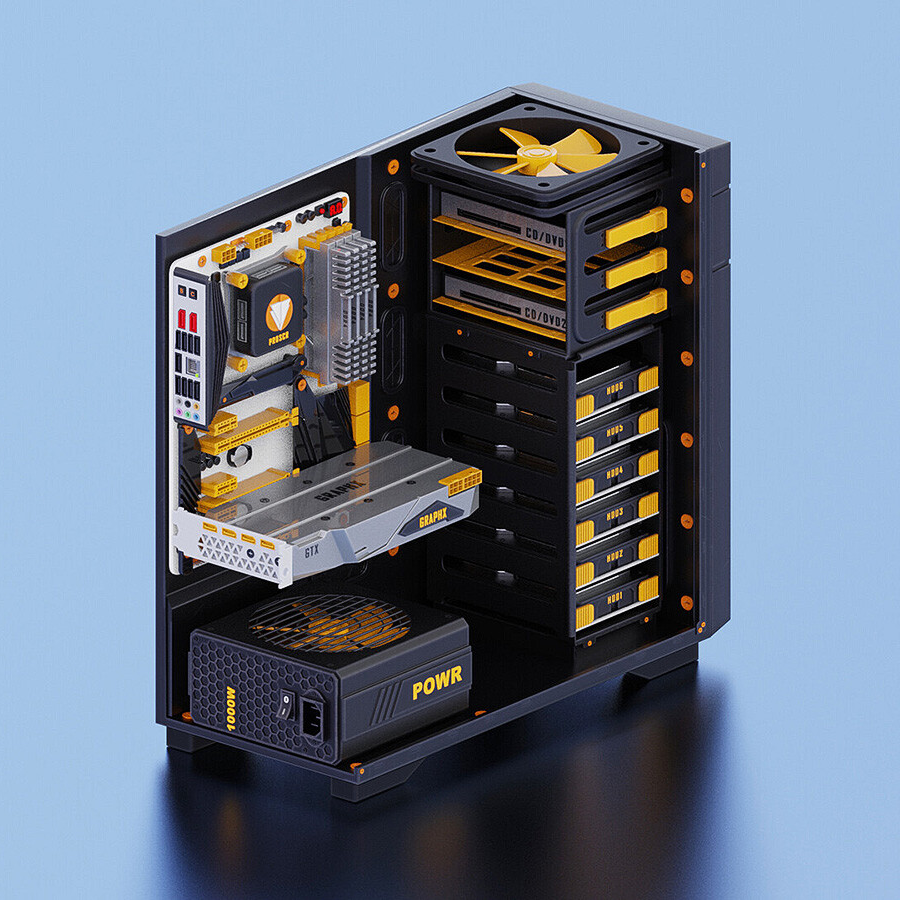Sunrise here, tomorrow, is around 7:30. When I take my morning walk, presumably just after I wake up at 5:30 because the walk is supposed to “get my brain ready to work” and I’m supposed to put several hours of work in during the morning, how do I “get sunlight in my eyes”?
- 0 Posts
- 9 Comments
deleted by creator

 5·3 months ago
5·3 months agoI really appreciate your effort on this forum. I barely thought about Lemmy as a resource for the Olympics until it was too late, which looking back a huge bummer. I also didn’t watch nearly enough…
I am already looking forward to 2026. Going to approach it very differently.

 2·3 months ago
2·3 months agoYeah, even the better boards struggled to break 3,000MT/s with Zen 1. They sure were fun to play with, though, one of the last times I felt like tinkering was actually getting me something.
I’d be curious how the more modern “default” 3600 kits do, I didn’t have a Ryzen system by the time they were popular and cheap.

 2·3 months ago
2·3 months agoSome B350m models did get Zen 3 compatibility. Not all, if I remember correctly, though I could be wrong. So whether it’s compatible I think is model dependent. Whether an old B350m has the VRMs for a chunkier CPU would also be a reasonable question.
I mentioned the R5 3600 because the prices on them are great. A 5800X3D does perform better, but I see completed eBay listings at $225+. They also needs a cooler. I see one 3600 that went for about $50 and several that went for $60, which isn’t too much more than a 16gb kit of DDR4.
I would definitely consider a Zen3 CPU for this upgrade, depending on budget.

 6·3 months ago
6·3 months agoFirst generation Ryzen struggles with higher memory speed. You very likely will not get the full 3600MT/s. There’s no real reason to buy slower, just be aware you’re likely going to hit a ceiling.
For gaming you might see bigger improvements from upgrading the CPU, maybe to an R5 3600. That and the memory are both going to offer big performance improvement.

 1·3 months ago
1·3 months agoScratch patterns are in my experience a little overblown, particularly at high degrees of polish. The sharpener they linked you finishes on ceramic, which generally is fairly fine.
Pull through sharpeners’ biggest problem is that they can’t practically get a clean, consistent apex that follows the sweep of the edge. To get close the housing of the sharpening material needs to be extremely rigid, the pressure used needs to be consistent and light, the angle of the knife in the sharpener needs to be consistent from pull to pull, and the sharpening material needs to be very clean. Otherwise the act of sharpening, while perhaps polishing the bevel, drives the apex into steel residue or abrasive or shifts its angle. That will round, grind down, or rip tiny chunks out of the apex. Still gets a pretty sharp edge.
I don’t find pull throughs suffer much with regard to retention. They don’t get a knife as sharp initially, so they do start with a shorter clock. But from there retention is okay. They completely avoid wire edges, which is nice, so in inexperienced hands in a way they much improve retention.
For most knife steels and uses, pull through sharpeners are okay when used with a light hand. What I’m calling a “clean, consistent apex” isn’t practically necessary in pocket knives. The Sharpmaker and several cheap jigs can produce edges like that, though, and those edges definitely feel better in use. At the reasonable additional cost that’s worth it to a lot of people.

 2·3 months ago
2·3 months agoIt is possible to sharpen a recurve edge on a waterstone with a rounded corner, but having wasted my time learning how I prefer the Sharpmaker. It’s near enough to the same speed, more intuitive, and more difficult for a new sharpener to make a mistake.
Some jigs have rounded stones specifically for recurves; I know there is a Lansky set. I haven’t used one, myself.
I suspect almost all heavy use recurve blades, carpet knives come to mind, are sharpened using pull through sharpeners. There are shaped sharpening stones specifically for recurves historically used in trade work, but they’re going to kind of suck.
Perhaps not a useful avenue for you right now, but my best results on recurves have by far been from paper wheels.
I know you asked how, but if you end up with only a few recurves paying a pro to do it is a reasonable option. Sharpening recurves is a niche inside a niche. No method I’ve tried of doing it by hand feels elegant or “right”.

 1·1 year ago
1·1 year ago“Give me a perception check.”
“Fourteen total.”
“You don’t notice anything different .”
“I get out my shovel.”


Buncha dumb fucks. Get ready to learn about the Supremacy Clause, hicks.
President Vance is going to skullfuck you into twenty years of Y’allqaeda Law. You don’t get to pick which Republican policies you like.